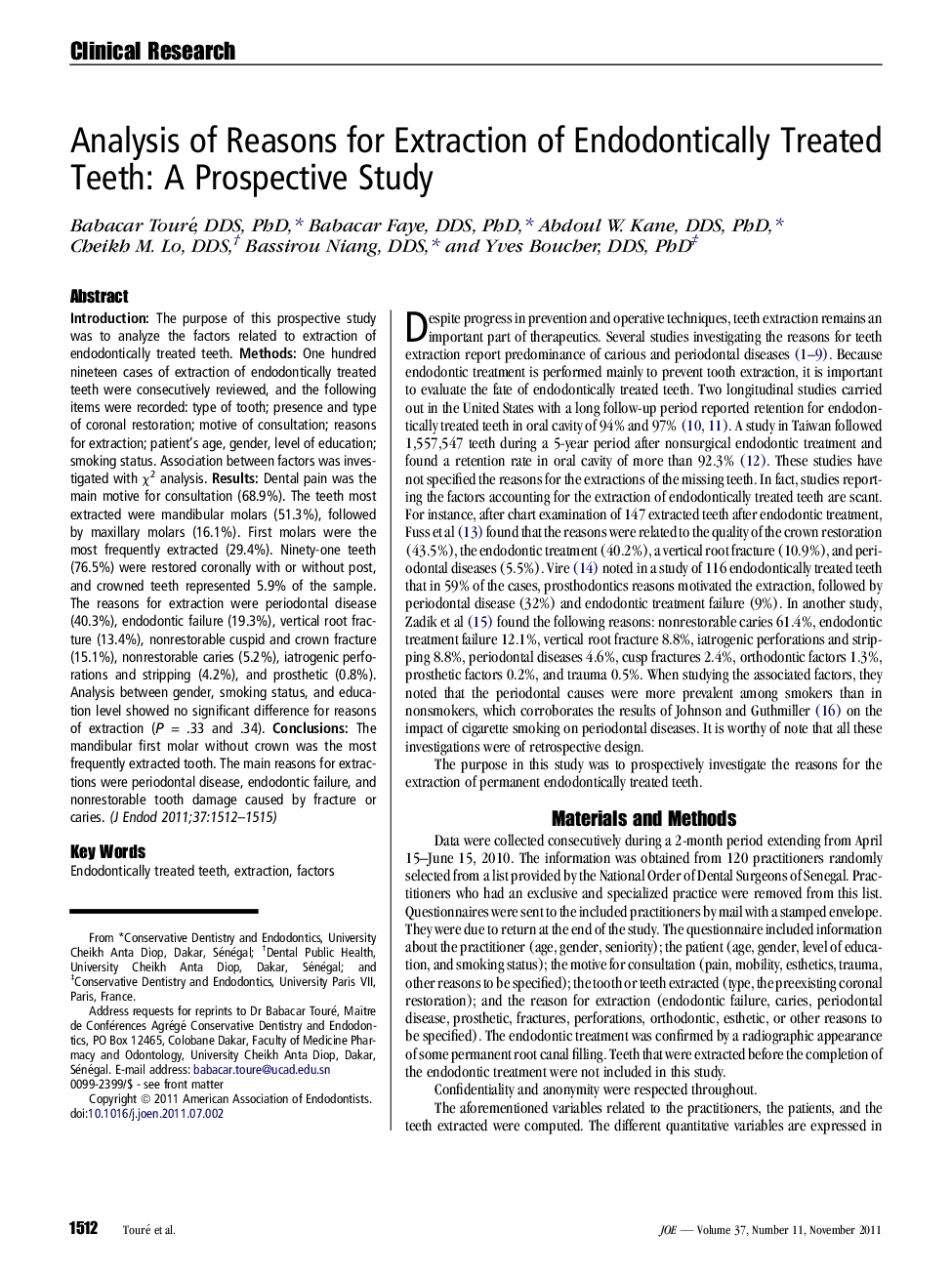| Article ID | Journal | Published Year | Pages | File Type |
|---|---|---|---|---|
| 3148860 | Journal of Endodontics | 2011 | 4 Pages |
IntroductionThe purpose of this prospective study was to analyze the factors related to extraction of endodontically treated teeth.MethodsOne hundred nineteen cases of extraction of endodontically treated teeth were consecutively reviewed, and the following items were recorded: type of tooth; presence and type of coronal restoration; motive of consultation; reasons for extraction; patient’s age, gender, level of education; smoking status. Association between factors was investigated with χ2 analysis.ResultsDental pain was the main motive for consultation (68.9%). The teeth most extracted were mandibular molars (51.3%), followed by maxillary molars (16.1%). First molars were the most frequently extracted (29.4%). Ninety-one teeth (76.5%) were restored coronally with or without post, and crowned teeth represented 5.9% of the sample. The reasons for extraction were periodontal disease (40.3%), endodontic failure (19.3%), vertical root fracture (13.4%), nonrestorable cuspid and crown fracture (15.1%), nonrestorable caries (5.2%), iatrogenic perforations and stripping (4.2%), and prosthetic (0.8%). Analysis between gender, smoking status, and education level showed no significant difference for reasons of extraction (P = .33 and .34).ConclusionsThe mandibular first molar without crown was the most frequently extracted tooth. The main reasons for extractions were periodontal disease, endodontic failure, and nonrestorable tooth damage caused by fracture or caries.
